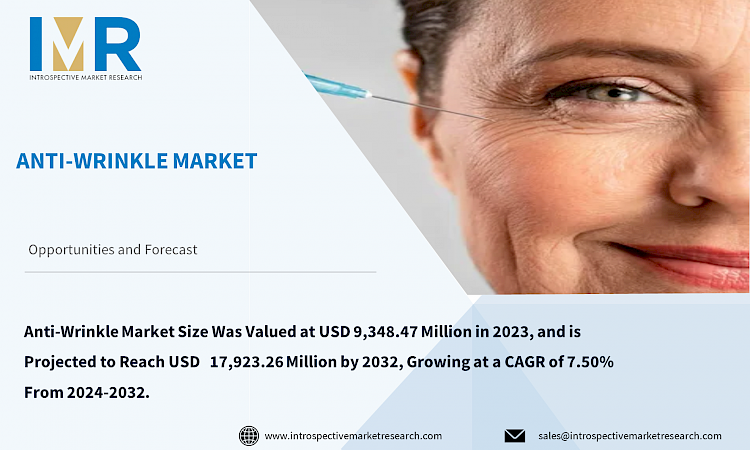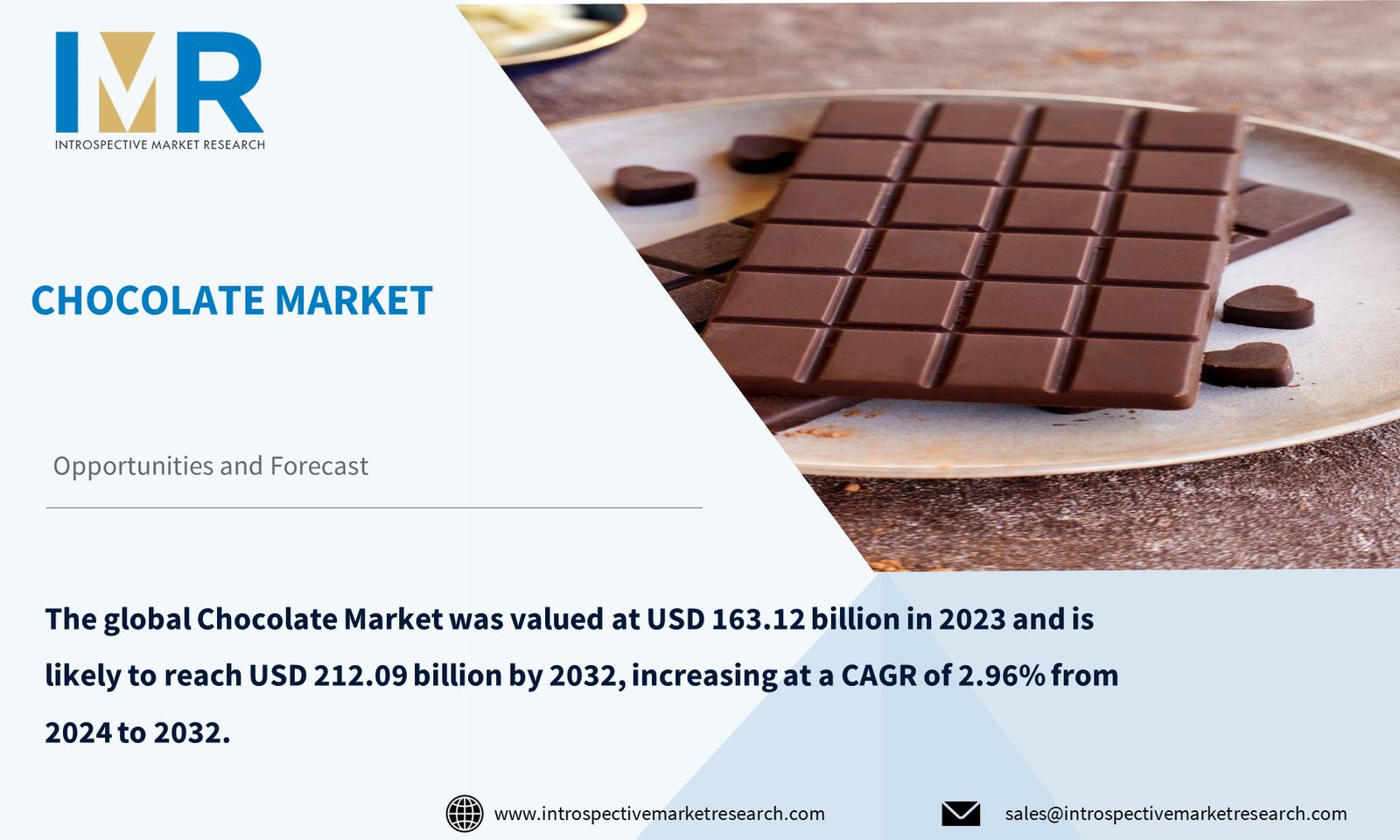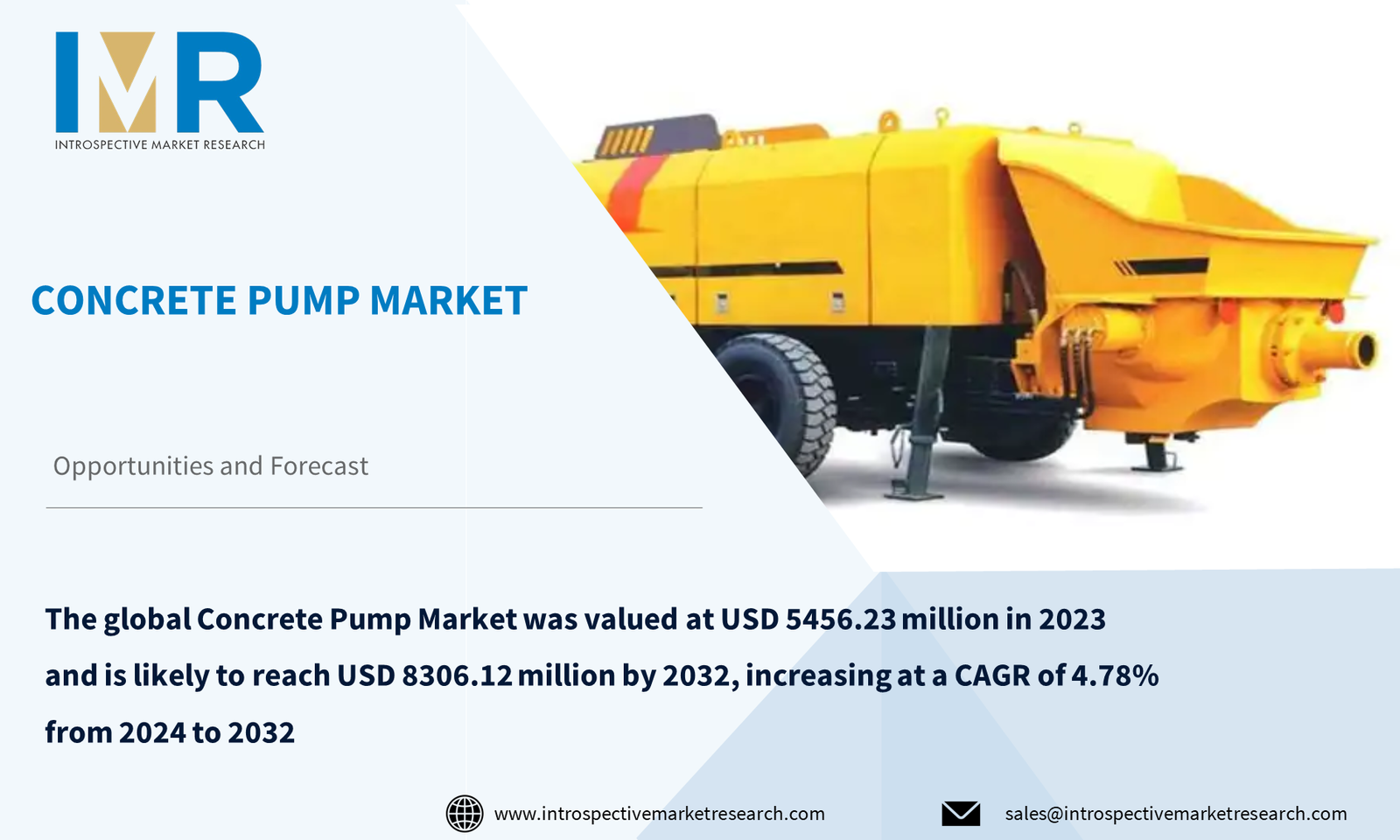Anti-Wrinkle Market
According to a new report published by Introspective Market Research, titled, “Anti-Wrinkle Market by Product Type, By Nature, By End User, By Sales Channel: Global Opportunity Analysis and Industry Forecast, 2024–2032,”
the Anti-Wrinkle Market Size Was Valued at USD 9,348.47 Million in 2023, and is Projected to Reach USD 17,923.26 Million by 2032, Growing at a CAGR of 7.50% From 2024-2032.
An anti-wrinkle cream is also known as an anti-aging cream, ointment, or medical procedure used to remove or reduce the appearance of wrinkles on the skin. These solutions generally aim to reverse the signs of aging by increasing skin moisture and calibrating elasticity and firmness. Synthetic topical creams containing retinoids and hyaluronic acid are a popular anti-wrinkle tactic in many ways, as are medical procedures including Botox injections and laser treatments. Therefore, it is important to understand anti-wrinkle measures to get a clear picture of the desired result, ie. youthful, wrinkle-free skin. The global anti-wrinkle industry has expanded over the past decade, benefiting from increased awareness of skincare and dermatology, longevity, cooling, and growth in cosmology.
According to The Anti-Wrinkle Market is segmented into Product Type, Nature, End User, Sales Channel, and Region. By Product Type, the market is categorized into Creams & Moisturizers, Cleansers, and Others. By Nature, the market is categorized into Natural/Herbal, Synthetic, and Organic). By End User, the market is categorized into Men and women. By Sales Channel, the market is categorized into Pharmacies, Specialty Outlets, Supermarkets/Hypermarkets, Convenience Stores, Beauty Stores, e-retailers Others. By region, it is analyzed across North America (U.S.; Canada; Mexico), Europe (Germany; U.K.; France; Italy; Russia; Spain, etc.), Asia-Pacific (China; India; Japan; Southeast Asia, etc.), South America (Brazil; Argentina, etc.), Middle East & Africa (Saudi Arabia; South Africa, etc.).
The increase in the use of organic and natural skin care products is due to a change in consumer awareness towards the use of all-natural products. Knowing the effects of most synthetic chemicals that make the skin worse, not better, most customers switch to organic products. This development is facilitated by the impression that natural and organically produced foods are harmless or safer for the skin and less harmful to the environment. This is shown by observing the trend of consumer research in the choice of products, that customers are more likely to choose products with organic certification and products with clearly labeled ingredients. Thanks to the use of the internet and the growth in popularity of health-oriented accounts, people have also become aware of the existence and use of natural anti-wrinkle cosmetics.
The Global Anti-Wrinkle Skin Care Market has witnessed dynamic technological developments that have accelerated industry growth and industry differentiation. More than non-invasive solutions that include laser therapy, radio frequency therapy, and microneedling; remove wrinkles and at the same time eliminate the possibility of long-term rehabilitation. In addition, newer formulations that include peptides, growth factors, and retinoids in topical agents have increased the effectiveness of this line of treatments. Genetic engineering and advanced research on the control of facial gene expression and the use of stem cells are also possible future methods in skin care.
Global Anti-Wrinkle Market, Segmentation
The Anti-Wrinkle Market is segmented based on Product Type, By Nature, By End User, By Sales Channel, and region.
Product Type:
The Product type segment is further classified into Creams & Moisturizers, Cleansers, and Others. Among these, the Creams & Moisturizers sub-segment accounted for the highest market share in 2023. Currently, the anti-wrinkle market can be divided by product type: cream and moisturizers, detergents, etc. The market for creams and moisturizers is the largest because many people want to buy cosmetics that reduce wrinkles and nourish the skin. These products may contain active ingredients such as retinoids, hyaluronic acid, or peptides, which are common in antiaging formulas. Cleansers are generally important adjuvants for the skin, but they play a more secondary role in the treatment of wrinkles because they create the best surface for other systems to pass through. These include serums, masks, and other more specific functions, services, and targeted products aimed at consumers who are concerned about a specific problem such as wrinkles and offer them simple and effective solutions such as anti-wrinkle patches. and devices.
Nature:
The Nature segment is further classified into Natural/Herbal, Synthetic, and Organic. Among these, the Synthetic sub-segment is anticipated to show the fastest growth by 2032. From a natural perspective, the anti-wrinkle market can be divided into natural/herbal, synthetic, and organic. The introduction of herbal/organic anti-wrinkle products by manufacturers is due to the growing consumer demand for natural-looking and protected natural products or other ingredients of natural origin that are considered safer and less harmful to the environment. Such products are most often marketed with the proposition that they can nourish the skin without adding the wrong ingredients to it, which is good for both skin health and the environmentally conscious customer. However, synthetic anti-wrinkle products contain substances that are artificially produced to provide a powerful effect and effective discord. Skin care products like these can use scientific research and product innovation to produce quite dramatic positive anti-aging effects, making them very popular for those who want to look better when they wake up the next morning.
Region:
The Anti-Wrinkle Market in Asia-Pacific is projected to show the fastest growth by 2032. In the ongoing study of the global anti-wrinkle market, Asia Pacific is expected to take the leading position during the forecast period. These factors have contributed to the growing dominance of this industry through growth in the aging population, disposable income, and increased awareness of skincare and cosmetic procedures. The growth of the region's middle-class population and the culture of maintaining and enhancing a youthful appearance are also important factors driving the acceptance of anti-wrinkle products. In addition, growth in research and development in dermatology and the availability of newer-generation anti-wrinkle treatments and products are also boosting the market.
Some of The Leading/Active Market Players Are-
- Unilever (UK)
- Revlon, Inc. (US)
- Procter & Gamble Co. (US)
- Oriflame Cosmetics AG – (Switzerland)
- Nature Republic – (South Korea)
- Natura & Co. – (Brazil)
- Mary Kay Inc. - United States (US)
- Lotus Herbals Limited – (India)
- L'Oréal S.A. – (France)
- Kao Corporation – (Japan)and Other Active Players
Key Industry Developments
- In October 2023, Indian actress Nayanthara and filmmaker Vignesh Shivan launched a new skincare line, 9Skin, alongside serial entrepreneur Daisy Morgan. A few of the company's unique items include SKINTILLATE, a booster oil; REJUVENATE, a night cream; ETERNELLE, an anti-aging serum; ILLUMINATE, a glow serum; and REVIVE a day cream.
- In June 2023, in conjunction with the introduction of its new anti-aging serum, PCA Skin had its parent business, CP Skin Health Group (Colgate-Palmolive), collaborate with NASA onboard the International Space Station (ISS) to examine the effect of microgravity on skin physiology. The brand's latest product is named Pro-Max Age Renewal. The professionally proven anti-aging serum is intended to lift and tighten skin by 60% while smoothing prominent lines and coarse wrinkles by 40%.
Key Findings of the Study
- The global anti-wrinkle market is projected to reach USD 17,923.26 million by 2032, growing at a CAGR of 7.50% from 2024 to 2032, indicating a significant expansion in the industry.
- The market is witnessing a shift towards organic and natural skincare products driven by increased consumer awareness regarding the harmful effects of synthetic chemicals on the skin, leading to a preference for safer and environmentally friendly options.
- Technological advancements, including non-invasive solutions like laser therapy and microneedling, as well as innovative formulations with peptides and growth factors, are enhancing the effectiveness of anti-wrinkle treatments.
- Asia-Pacific is expected to exhibit the fastest growth in the anti-wrinkle market, driven by factors such as a growing aging population, rising disposable income, heightened skincare awareness, and advancements in dermatological research and products.







